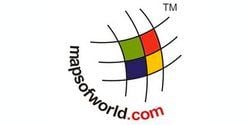Persian Language Overview:
The Persian language is occasionally mentioned in English as “Farsi,” but in fact this term only refers to the Iranian variant of a language that is quite widespread. Like English, Persian has no single standardized version, with the “standard” instead being determined by the country in which it is spoken. Farsi is generally spoken in Iran, Dari is generally spoken in Afghanistan, Tajik is generally spoken in Central Asia. The many dialects arose after the language was spread far across the center of the world through the dominance of the Persian Empire.
There was a time when Persian was the lingua franca of much of the Middle East and South Asia. Persian influences are still found in Arabic, Turkish, Hindi and especially Urdu, and even in some Eastern European languages. Conversely, these languages have also influenced Persian over the centuries, and the language additionally shows signs of borrowing from French, English and Russian in the modern age.
Roots of the Persian Language:
The Persian language evolved in what is modern-day Iran, in the Mesopotamian civilizations that were at one time the most advanced human cultures on the planet. The history of Persian is rather straightforward, with Old, Middle, and New Persian being direct descendants of one another with relatively little foreign influence. The language borrowed many terms from other cultures around the world, both in the ancient world and today, but this took place over a very long period of time. During the flourishing of the Islamic world in the eighth and ninth centuries, Persian became an international language of art, government, science, and intellectualism.
Persian Language Characteristics:
Persian grammar has changed dramatically over the millennia that the language has been in existence. Old Persian, for example, is thought to have been highly inflected–modifying root words to produce new meanings–while modern Persian is much less so. Additionally, Old Persian had three grammatical genders (male, female, and neuter) that are now absent in modern Persian. Because Persian has such an extensive written history, changes in the language are somewhat easier to track than in many other tongues of the world.
It has been noted that Persian is well-suited for writing poetry, due to the fact that grammatical word order is not very strict in the language (although most declarative sentences must end in a verb). Pronouns are not strong in Persian and can frequently be omitted within a sentence, while concepts such as possession are communicated through adding suffixes. Much like English and German, Persian is capable of creating entire new words by combining established ones into a compound word.
Written form: Persian has an extensive literary tradition dating back thousands of years. It is very likely that Persian is the second most important language, after Arabic, used to interpret the religious texts of Islam. Persian secular literature and poetry has also had a profound effect on neighboring cultures and nations previously a part of the Persian Empire. In its earliest versions, written Persian was likely entirely separate from the spoken form, but over the centuries it has become more and more phonemic in nature.
The ancient form of Persian was written in a cuneiform script, and comprises some of the oldest documents in the world. Later on, the Arabic script was adopted by the Persians, who modified it to suit their language. The modern Persian script looks very similar to Arabic, and like that language is written right to left in a flowing, cursive form. Several letters have been changed slightly, and a few new ones have been added altogether to represent Persian sounds. The Perso-Arabic script, as interpreted by the Persians, has influenced the written languages of many countries in the Middle East and Southern Asia.
 Russian Language
Russian Language